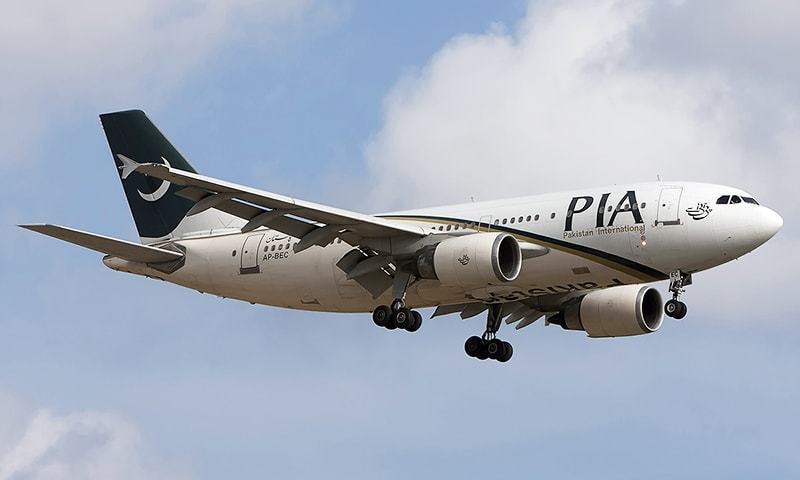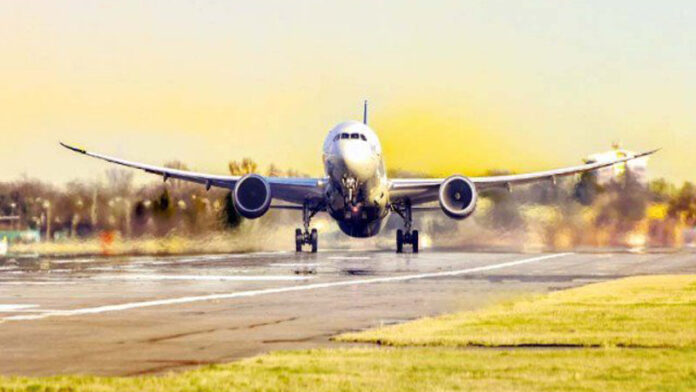Set to annunciate a revised National Aviation Policy, NAP-2014 through the Ministry of Aviation, the vision of the govt is to ensure “a safe, secure, dynamic, fair, innovative, and customer-centric approach to transform the aviation industry into a potent catalyst for socio-economic well-being of the nation”. The objectives are, viz (1) comply with ICAO standards of safety, security and efficiency aspects of “Air Transportation” (2) restructure Civilian Aviation Authority (CAA) for greater safety, autonomy, positive and pro-active governance (3) adopt best international practices of “Public–Private Partnership” for operations and management of airports (4) develop state-of-the-art infrastructure and technology for provision of safe, efficient and quality air navigation services and airport services (5) create level playing field for national airlines (6) promote General Aviation for pilots training, tourism, plant protection, cloud seeding and (7) enhance training and skills in the field of general aviation.
For “safety and security” the new Policy envisages (1) an independent Safety Investigation Board (SIB) reporting directly to Minister of Aviation with adequate resources provided as a separate head in the budget. A regulatory body would be established to regulate standards of aviation security as per CAA standards and Airport Security Force (ASF) Ordinance 1975 and (2) State-of-the-art technology and equipment procured to ensure security at Airports, all imported equipment being exempt from all taxes/duties.
To resolve conflict of interest between Regulator & Service Provider, CAA shall be split under the Director General (DG) CAA into following three entities with adequate financial and administrative autonomy (1) Aviation Safety Regulator headed by Deputy Director General (DDG CAA) (2) Airport Services headed by DDG CAA Airport Services and (3) Air Navigation Services headed by DDG CAA Air Navigation services. One has reservations about this, instead of the Aviation Safety Regulator (ASR) reporting to DG CAA, DG ASR must directly report directly, like the SIB, to the Minister of Aviation. The DG CAA should have only Airport Services and Air Navigation Services under him.
The revised NAP will pursue unilateral “open sky” policy with SAARC and ASEAN countries and a bilateral one with others on the principle of reciprocity and (2) allow open sky policy for cargo operations to designated foreign airlines of our bilateral partners, based on 3rd/4th and 5th freedom traffic rights. For “Airport infrastructure Development”, the NAP envisages, (1) Public-Private Partnership models adopted for operations, management and development (2) Available land at all airports would be utilized effectively for commercialization and growth of aviation sector (3) Construction of new commercial airports in private sector be permitted (4) Machinery/equipment/material imported first time for development of “Green Airports” be exempt from all duties/taxes (5) Cargo Village facilities be developed on public-private partnership model starting with Karachi and New Islamabad Airport. Multi-modal transport links, perishable cargo facilities/cold chain facilities, warehouses, IT infrastructure etc. be also developed. (6) Maintenance, Repair, Overhaul (MRO) organizations be developed (7) Incentives for foreign investment in MRO to include: (a) 5 years tax holiday (b) No CAA charges on allocated land for MRO business for 5 years and (c) No duty and taxes shall be levied on import of tools, related machinery, manuals and technical subscriptions and (8) CAA making changes in the regulations to absorb the experienced national resource of retiring aviation engineers and technicians from Armed Forces gainfully in the MRO.
For operational infrastructure development CAA shall (1) develop future Air Navigation plan in accordance with Global Air Navigation Plan (GANP) (2) upgrade its communication, navigation and surveillance infrastructure as required for Performance Based Navigation (PBN). Satellite Based systems and technology will be introduced and implemented to keep pace with Global Air Navigation requirements and (3) improve coordination between civil and military aviation authorities with respect to flexible use of airspace (FUA).
The “Operational Policy Guidelines” for airline registration, fleet size, age of aircraft includes (1) registration in Pakistan by all operators mandatory (2) five airworthy aircraft minimum fleet size for both domestic and international operations, operator will be eligible for international operations after successful domestic operations for 2 years (3) paid up capital for such airlines, enhanced from PKR 100 million to 500 million (4) calendar age of aircraft not more than twelve (12) years at the time of induction (5) Aircraft older than eighteen (18) years shall not be allowed and (6) Foreign airlines shall be permitted to take equity stakes up to 49% in domestic carriers.

For socio-economic routes (1) no landing and housing charges at secondary airports for scheduled services (2) domestic carriers shall operate on at least one primary or one secondary route (a) on Primary Routes at least 10% of total capacity of available seat kilometers (ASKs) floated on Trunk routes, or (b) for Secondary Routes at least 5% of ASKs floated on Trunk routes. For Socio-Political Routes guidelines will be (1) Charter operators be encouraged to operate scheduled commuter services to/from Gwadar, Turbat, Panjgur, Khuzdar, Dalbandin, Zhob, Rawalakot, and Muzaffarabad. Political integration shall be the prime objective of this plan, economic advantages expected to accrue over time (2) Incentives to include no tax, no charges by CAA, permission for wet lease operation up to one year, and privilege to operate (with 19 seat or below aircraft) after one year of successful operation (3) No sales tax on fuel used for the entire trip on the selected routes (average fuel consumption for each type of aircraft for each round trip shall be determined). Tickets sold on these routes shall also be free of sales tax/FED.
The formulation process of NAP 2014 involved studying the (1) Aviation policies of Australia, USA, UK, Singapore, China, Canada, and India to analyze the gap between NAP-2000 and global trends and the best practices of aviation in 2014. (2) All stakeholders in the aviation industry were consulted and their recommendations included (3) professional aviation policy consultants from world’s largest Aeronautical University, Embry Riddle of Florida, were engaged to guide and make recommendations after reviewing the Aviation policy draft.
The need is to develop a first class CAA management which would shed the bureaucratic straitjacket and a corrupt mindset to implement NAP-2014, those in the senior hierarchy presently do not inspire much confidence. Dealing with the corrupt and efficient in the present corrupt societal environment, the corrupt and inefficient are a disaster. In one case air bridges at an international airport in Pakistan have been leased out for almost Rs 115 million over 5 years through a glib talking agency, CAA got only Rs 45 million. Guess who all pocketed the Rs 70 million difference? 15% Agency Commission is well earned, but 250%? One believes Capt Shujaat Azeem has put a stop to this. If National Accountability Bureau (NAB) cannot send some people to jail for this, they are not doing their job!
Capt Shujaat Azeem has his work cut out for him in the presence of a well entrenched aviation mafia, a genuine public private partnership in crime, he needs to be eulogized and encouraged for setting the stage for “letting a hundred flowers bloom” in the aviation industry of Pakistan, this time well thought out, purposeful and well regulated. Nawaz Sharif’s 1993 “open skies” policy was a sincere attempt to open up the country to more “foreign direct investment”, unfortunately this window of opportunity was misused at great cost to Pakistan. Appointing Capt Shujaat Azeem, a competent professional and a very successful entrepreneur the de-facto Aviation Czar, one must give credit to the PM for having the courage to re-visit the original 1993 decision and revise NAP 2000 in pragmatic fashion.




